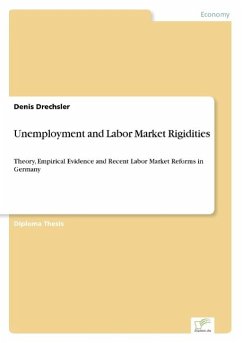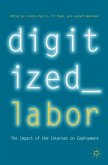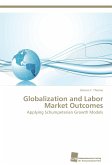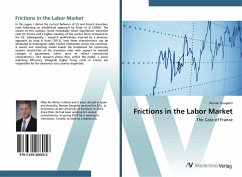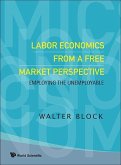Diploma Thesis from the year 2004 in the subject Economics - Macro-economics, general, grade: 1,0, University of Potsdam (Wirtschafts- und Sozialwissenschaftliche Fakultät), language: English, abstract: Inhaltsangabe:Abstract:
Many European countries have experienced a significant increase of unemployment in recent years. Especially striking is the fact that unemployment rates in most European countries are significantly higher as compared to the United States.
This paper reviews several theoretical models, which have been proposed to explain this phenomenon. Predominantly, these models claim a link between the poor performance of European labor markets and the high level of market regulation. Commonly referred to as the Eurosclerosis debate, prominent approaches consider insider-outsider relationships, search-models, and the influence of hiring and firing costs on equilibrium employment.
The paper presents empirical evidence of each model and studies the relevance of the identified rigidities as a determining factor for high unemployment in Europe. Furthermore, a case study analyzes the unemployment problem in Germany and critically discusses recent reform efforts.
Einleitung:
In vielen europäischen Ländern ist die Arbeitslosigkeit in den vergangenen Jahren stark angestiegen. Besonders auffallend ist hierbei, das die Arbeitslosenrate in den meisten europäischen Staaten über den Werten in den USA liegt.
Die vorliegende Arbeit untersucht eine Reihe theoretischer Modelle, die in der Literatur zur Erklärung dieses Phänomens diskutiert werden. Hauptsächlich sehen diese Modelle eine Verbindung zwischen dem hohen Grad an Marktregulierung und der schlechten Performance europäischer Arbeitsmärkte. Im Rahmen der so genannten Eurosclerosis-Debatte beleuchten mehrere Ansätze eine Insider-Outsider-Problematik, Such-Modelle, sowie den Einfluss von Einstellungs- und Kündigungsschutzregelungen (hiring- and firing-costs) auf die gleichgewichtige Beschäftigungsquote.
Die Arbeit diskutiert die empirische Relevanz jedes Modells und analysiert insbesondere ihre Bedeutung als Erklärungsansatz für die hohe Arbeitslosigkeit in Europa. Darüber hinaus untersucht eine Fallstudie das Arbeitslosigkeitsproblem in Deutschland und diskutiert jüngste Reformmaßnahmen des so genannten Hartz-Programms. Insbesondere steht dabei die Frage im Vordergrund, ob einzelne Arbeitsmarktinstrumente wie Ich-AGs, Persönliche Service Agenturen (PSAs) sowie Mini- und Midijobs Abhilfe schaffen zu den in der Literatur identifizierten Beschäftigungshemmnissen.
Inhaltsverzeichnis:Table of Contents:
1.Introduction1
2.Labor Market Rigidities and the European Unemployment Problem4
3.Theories of High Unemployment in Europe10
3.1Demand for Labor11
3.1.1Hiring and Firing Costs11
3.1.2Demand Shocks and Labor Demand13
3.1.3Labor Demand and International Outsourcing15
3.2Supply of Labor163.2.1Search Models16
3.2.2Search Effort and Unemployment Compensation17
3.2.3Optimal Adjustment of Unemployment Compensation22
3.3Rigidities and Wage Bargaining26
3.4Why do rigidities exist?27
3.4.1Job Security and Insider Power28
3.4.2Insider Power and the Level of Unionization30
4.Empirical Evidence32
5.Unemployment in Germany37
5.1Overview of Germany s Unemployment Problem38
5.2Recent Reform Efforts - The Hartz Program42
5.2.1Job Procurement and Personal Service Agencies43
5.2.2Low-Wage Sector and Mini- and Midijobs45
5.2.3Long-Term Unemployment and Entrepreneurial Spirit47
5.2.4Incentives and Disincentives52
5.3Discussion of the Hartz Reforms55
5.3.1Sticks and Carrots55
5.3.2Long-Term Unemployment56
5.3.3Job Creation57
5.3.4Hartz Reforms Vision and Reality57
6.Conclusion59
References64
Many European countries have experienced a significant increase of unemployment in recent years. Especially striking is the fact that unemployment rates in most European countries are significantly higher as compared to the United States.
This paper reviews several theoretical models, which have been proposed to explain this phenomenon. Predominantly, these models claim a link between the poor performance of European labor markets and the high level of market regulation. Commonly referred to as the Eurosclerosis debate, prominent approaches consider insider-outsider relationships, search-models, and the influence of hiring and firing costs on equilibrium employment.
The paper presents empirical evidence of each model and studies the relevance of the identified rigidities as a determining factor for high unemployment in Europe. Furthermore, a case study analyzes the unemployment problem in Germany and critically discusses recent reform efforts.
Einleitung:
In vielen europäischen Ländern ist die Arbeitslosigkeit in den vergangenen Jahren stark angestiegen. Besonders auffallend ist hierbei, das die Arbeitslosenrate in den meisten europäischen Staaten über den Werten in den USA liegt.
Die vorliegende Arbeit untersucht eine Reihe theoretischer Modelle, die in der Literatur zur Erklärung dieses Phänomens diskutiert werden. Hauptsächlich sehen diese Modelle eine Verbindung zwischen dem hohen Grad an Marktregulierung und der schlechten Performance europäischer Arbeitsmärkte. Im Rahmen der so genannten Eurosclerosis-Debatte beleuchten mehrere Ansätze eine Insider-Outsider-Problematik, Such-Modelle, sowie den Einfluss von Einstellungs- und Kündigungsschutzregelungen (hiring- and firing-costs) auf die gleichgewichtige Beschäftigungsquote.
Die Arbeit diskutiert die empirische Relevanz jedes Modells und analysiert insbesondere ihre Bedeutung als Erklärungsansatz für die hohe Arbeitslosigkeit in Europa. Darüber hinaus untersucht eine Fallstudie das Arbeitslosigkeitsproblem in Deutschland und diskutiert jüngste Reformmaßnahmen des so genannten Hartz-Programms. Insbesondere steht dabei die Frage im Vordergrund, ob einzelne Arbeitsmarktinstrumente wie Ich-AGs, Persönliche Service Agenturen (PSAs) sowie Mini- und Midijobs Abhilfe schaffen zu den in der Literatur identifizierten Beschäftigungshemmnissen.
Inhaltsverzeichnis:Table of Contents:
1.Introduction1
2.Labor Market Rigidities and the European Unemployment Problem4
3.Theories of High Unemployment in Europe10
3.1Demand for Labor11
3.1.1Hiring and Firing Costs11
3.1.2Demand Shocks and Labor Demand13
3.1.3Labor Demand and International Outsourcing15
3.2Supply of Labor163.2.1Search Models16
3.2.2Search Effort and Unemployment Compensation17
3.2.3Optimal Adjustment of Unemployment Compensation22
3.3Rigidities and Wage Bargaining26
3.4Why do rigidities exist?27
3.4.1Job Security and Insider Power28
3.4.2Insider Power and the Level of Unionization30
4.Empirical Evidence32
5.Unemployment in Germany37
5.1Overview of Germany s Unemployment Problem38
5.2Recent Reform Efforts - The Hartz Program42
5.2.1Job Procurement and Personal Service Agencies43
5.2.2Low-Wage Sector and Mini- and Midijobs45
5.2.3Long-Term Unemployment and Entrepreneurial Spirit47
5.2.4Incentives and Disincentives52
5.3Discussion of the Hartz Reforms55
5.3.1Sticks and Carrots55
5.3.2Long-Term Unemployment56
5.3.3Job Creation57
5.3.4Hartz Reforms Vision and Reality57
6.Conclusion59
References64

